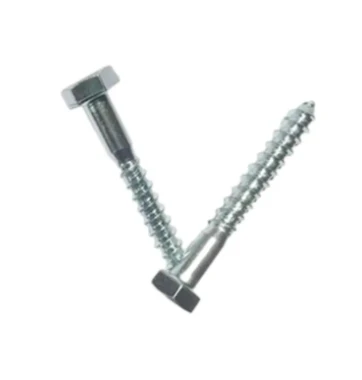окт. . 16, 2024 06:21 Back to list
Hex Nut Size Specifications and Dimensions Guide for Various Applications
Understanding Hex Nut Dimensions A Comprehensive Guide
Hex nuts are essential components in a variety of mechanical and construction applications. These six-sided fasteners are designed to fit onto bolts and screws, providing a secure hold that can withstand various loads and stresses. Understanding hex nut dimensions is critical for engineers, mechanics, and DIY enthusiasts alike, as it directly affects the performance and reliability of assembled structures.
What are Hex Nuts?
Hex nuts, as the name suggests, have a hexagonal shape with six sides. They are typically made of materials such as steel, stainless steel, brass, or nylon, depending on the intended application. Their design allows for easy tightening and loosening with standard tools like wrenches and sockets. Hex nuts are used in conjunction with bolts, screws, and washers to create secure joints in machinery, vehicles, and other constructions.
Key Dimensions to Consider
When selecting hex nuts, there are several critical dimensions to keep in mind
1. Width Across Flats (WAF) This measurement refers to the distance between two opposite sides of the hex nut. It is crucial because the width dictates which size wrench or socket you will need for installation or removal. Common WAF sizes vary significantly, with popular dimensions including 6mm, 8mm, 10mm, 12mm, and so on, often up to 80mm or more for larger applications.
2. Thickness The height or thickness of a hex nut affects its load-bearing capacity. Standard hex nuts typically have a thickness that is approximately 0.8 to 1.6 times the screw diameter. For instance, a nut designed for a 10mm bolt will generally have a thickness of around 8mm to 16mm, depending on the grade and material.
hex nut dimensions chart

3. Hole Diameter This is the internal diameter of the nut, matching the thread size of the corresponding bolt or screw. Threads can be coarse or fine, and the selection depends on the application. The most common sizes in the imperial system include sizes such as 1/4”, 5/16”, and 3/8”, while metric systems might feature M6, M8, M10, and so forth.
4. Thread Pitch Thread pitch is the distance between threads and is an important dimension that affects how well the nut grips the bolt. Coarse threads are suitable for quicker assembly, while fine threads offer better tensile strength and are ideal for applications requiring a more secure and adjustable joint.
5. Material and Grade The strength and durability of a hex nut are largely determined by its material and grade. For example, Grade 2 nuts are made from low-carbon steel and are suitable for light-duty applications, while Grade 8 nuts are made from medium-carbon steel and heat-treated for higher strength in heavy-duty applications.
Importance of Proper Sizing
Using the correct hex nut size is vital to ensure optimal performance. A nut that is too loose may cause the bolt to shear or the assembly to become disjointed, leading to machinery failure or structural collapse. Conversely, a nut that is too tight may strip the threads, damaging both the nut and the bolt.
Conclusion
Understanding hex nut dimensions is fundamental for anyone involved in mechanical assembly and construction. By familiarizing oneself with the various dimensions—width across flats, thickness, hole diameter, thread pitch, and material grade—professionals and DIY enthusiasts can ensure they choose the right fasteners for their projects. The right hex nut not only guarantees the integrity of the assembly but also enhances safety and long-term durability in a wide range of applications. Always consult a hex nut dimensions chart to make informed decisions and achieve the best results in your work.
-
The Ubiquitous Reach of DIN934 in Application Realms
NewsMay.16,2025
-
Exploring Different Bolt Types
NewsMay.16,2025
-
Cracking the Code of Sleeve Anchor Mastery
NewsMay.16,2025
-
Clamp Design Principles,Types and Innovations
NewsMay.16,2025
-
Artistry Inspired by the Humble Anchor Bolt
NewsMay.16,2025
-
A Deep Dive into Screw Types
NewsMay.16,2025


